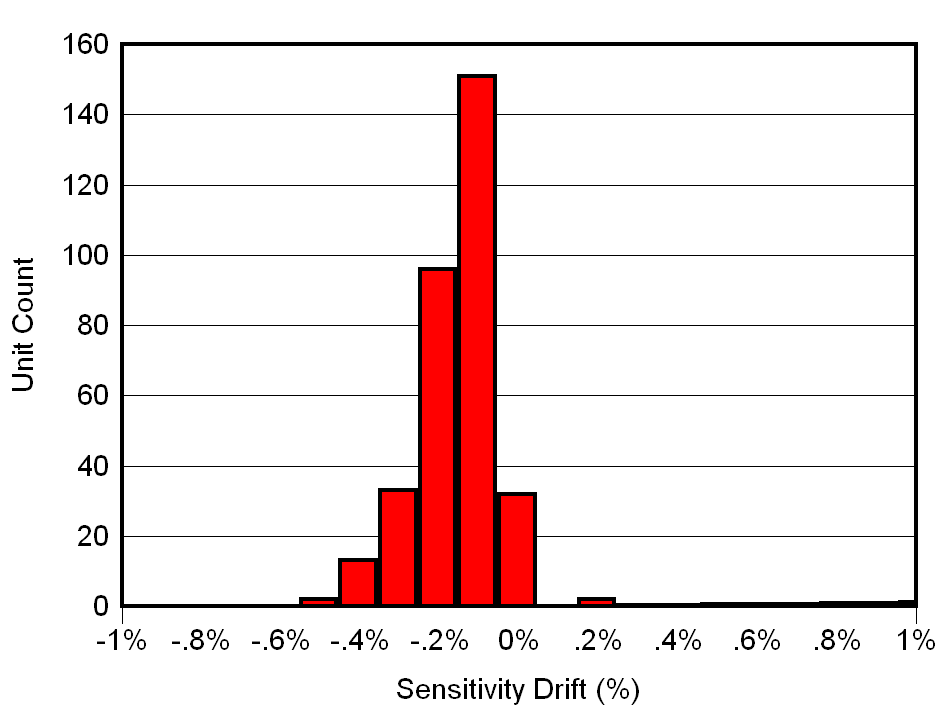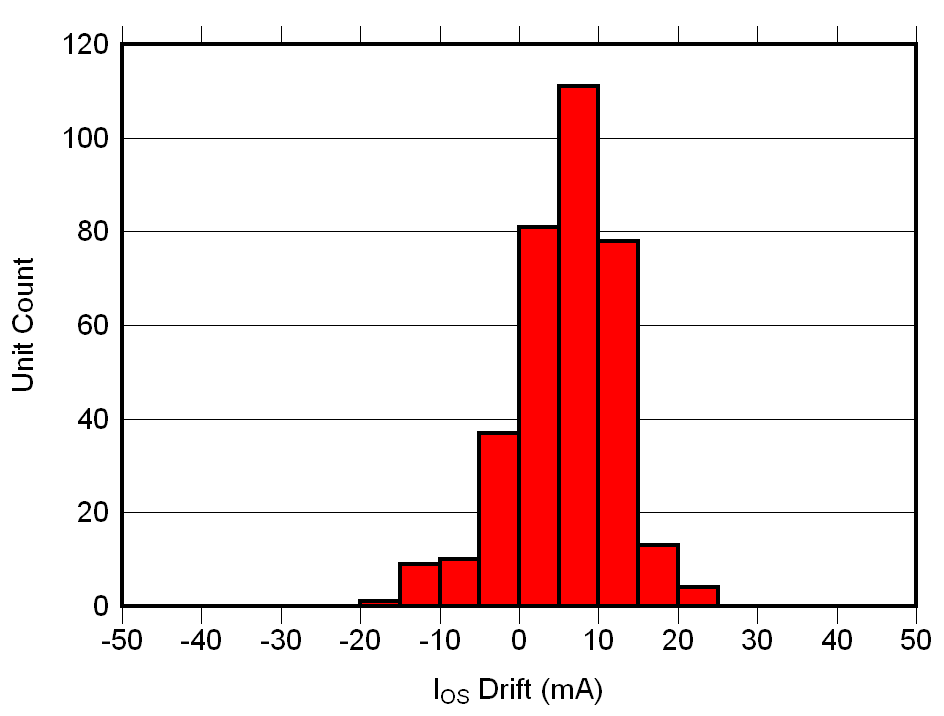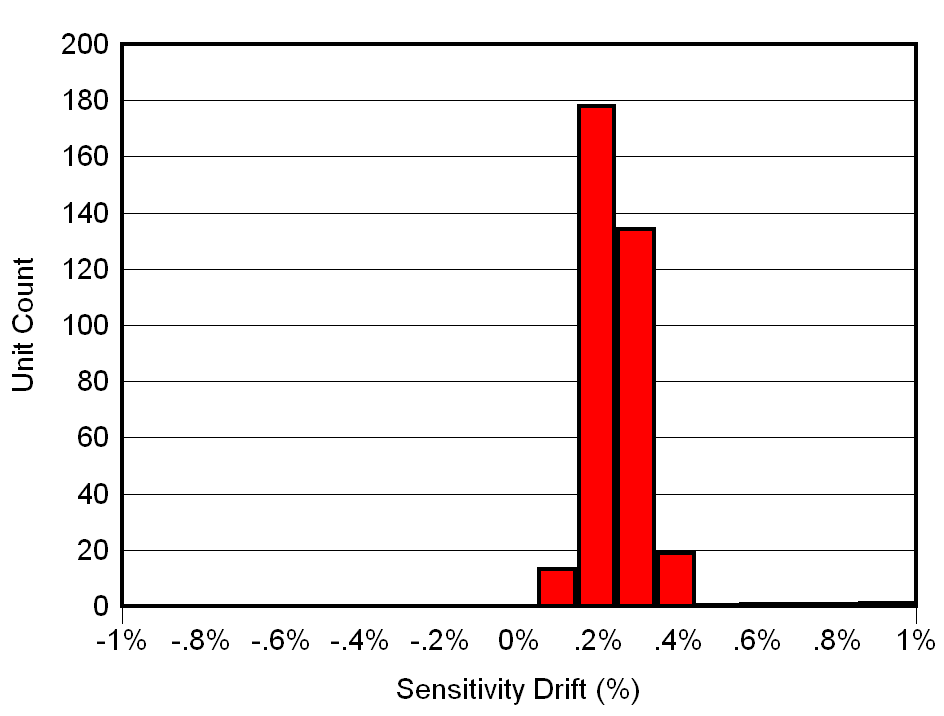ZHCSM20 June 2021 TMCS1100-Q1
PRODUCTION DATA
- 1 特性
- 2 应用
- 3 说明
- 4 Revision History
- 5 Device Comparison
- 6 Pin Configuration and Functions
- 7 Specifications
- 8 Parameter Measurement Information
- 9 Detailed Description
- 10Application and Implementation
- 11Power Supply Recommendations
- 12Layout
- 13Device and Documentation Support
- 14Mechanical, Packaging, and Orderable Information
9.3.3.2 Lifetime and Environmental Stability
The same compensation techniques used in the TMCS1100-Q1 to reduce temperature drift also greatly reduce lifetime drift due to aging, stress, and environmental conditions. Typical magnetic sensors suffer from up to 2% to 3% of sensitivity drift due to aging at high operating temperatures. The TMCS1100-Q1 has greatly improved lifetime drift, as defined in the Section 7.9 for total sensitivity error measured after the worst case stress test during a three lot AEC-Q100 qualification. All other stress tests prescribed by an AEC-Q100 qualification caused lower than the specified sensitivity error, and were within the bounds specified within the Section 7.9 table. Figure 9-4 shows the total sensitivity error after the worst-case stress test, a Highly Accelerated Stress Test (HAST) at 130°C and 85% relative humidity (RH), while Figure 9-5 and Figure 9-6 show the sensitivity and offset error drift after a 1000 hour, 125°C high temperature operating life stress test as specified by AEC-Q100. This test mimics typical device lifetime operation, and shows the likely device performance variation due to aging is vastly improved compared to typical magnetic sensors.
 Figure 9-4 Sensitivity Error After 130°C, 85% RH
HAST
Figure 9-4 Sensitivity Error After 130°C, 85% RH
HAST Figure 9-6 Input-Referred Offset Drift After AEC-Q100
High Temperature Operating Life Stress Test
Figure 9-6 Input-Referred Offset Drift After AEC-Q100
High Temperature Operating Life Stress Test Figure 9-5 Sensitivity Error Drift After AEC-Q100 High
Temperature Operating Life Stress Test
Figure 9-5 Sensitivity Error Drift After AEC-Q100 High
Temperature Operating Life Stress Test